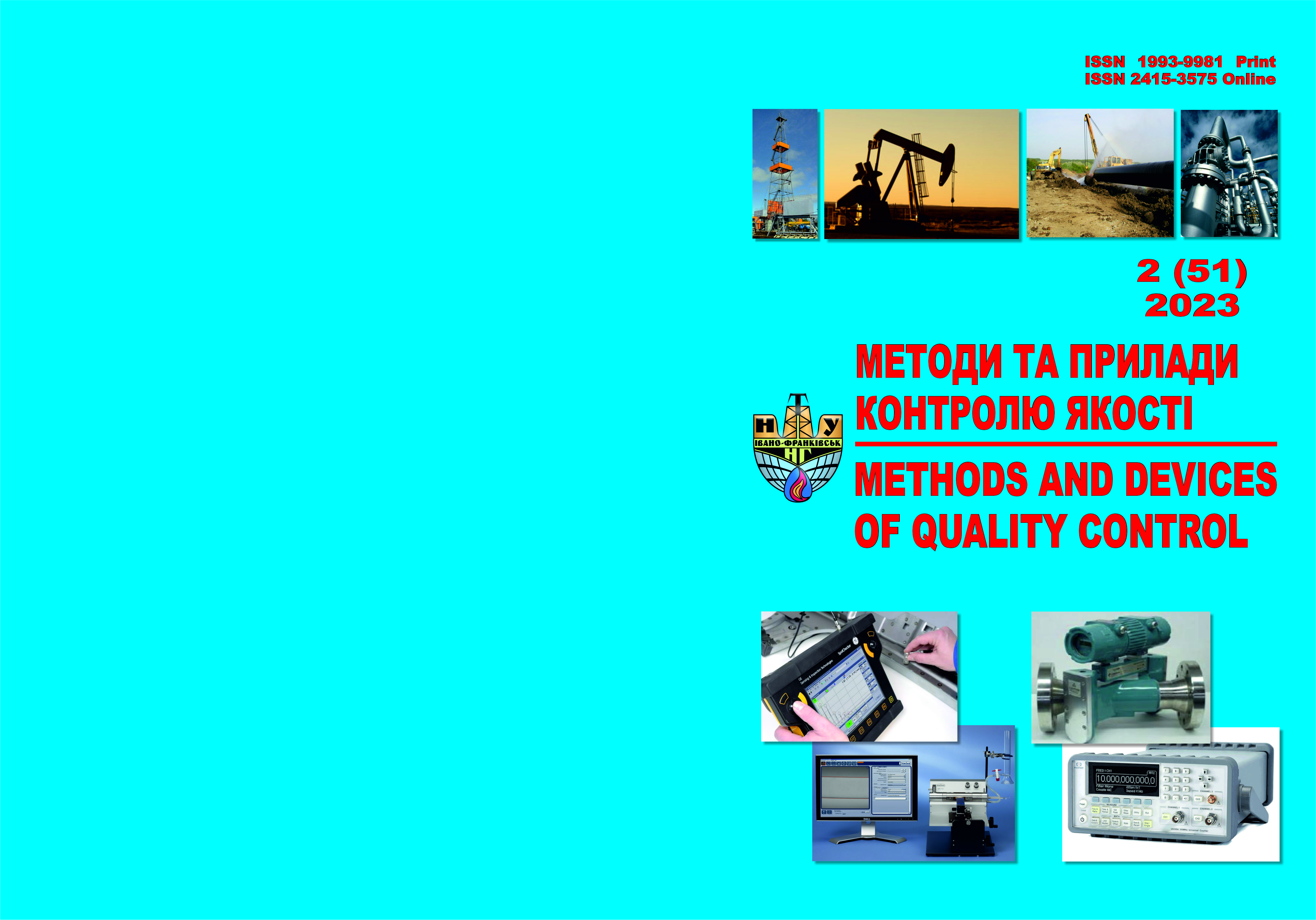ОПТИМІЗАЦІЯ КОНТРОЛЮ ДЕФЕКТІВ З ВИКОРИСТАННЯМ ПЛАСТИНЧАТИХ НАПРЯМНИХ ХВИЛЬ ТА АЛГОРИТМІВ
DOI:
https://doi.org/10.31471/1993-9981-2023-2(51)-16-28Ключові слова:
ультразвук; металоконструкції; напрямні хвилі; неруйнівний контроль.Анотація
Робота присвячена вивченню і оптимізації контролю деформації під час використання пластинчатих напрямних хвиль. Автори підкреслюють важливість цього дослідження в контексті сучасного виробничого процесу, де постійно росте попит на високоякісні вироби, а технологічний прогрес вимагає постійної оптимізації. Основна мета дослідження полягає у виявленні ключових параметрів, що впливають на процеси деформації. Для цього автори проводять детальний аналіз, використовуючи математичний опис. Цей математичний опис допомагає краще зрозуміти динаміку процесів та взаємодію різних факторів, які впливають на виявлення дефектів в матеріалі об’єкту контролю. Наведено математичний опис параметрів роботи ультразвукового первинного перетворювача із детальним аналізом матеріалів виготовлення та способів застосування. Значну увагу приділено аналізу акустичного поля відбитого від границі розділу матеріал середовища поширення – дефект з практичної точки зору, а саме як найбільш оптимально виявити дефект та отримати його метричні показники. Стаття також акцентує увагу на необхідності розробки нових алгоритмів оброблення результатів. Це важливо для того, щоб забезпечити точність вимірювань та адекватність отриманих даних. Графіки та ілюстрації, представлені в статті, надають наглядне уявлення про досліджені процеси та їх особливості. Також наведено графік виявлення дефекту в стінці труби з застосуванням наведеного в статті математичного апарату. Автори підкреслюють, що вдосконалення технологічних процесів є ключовим елементом для підвищення ефективності виробництва. Оптимізація процесів контролю дефектів дозволить знизити виробничі витрати, покращити якість виробів та забезпечити їх довговічність. У підсумку, стаття представляє собою цінний внесок у вивчення та оптимізацію контролю наявності дефектів в металах, зокрема трубопроводах. Дослідження авторів має велике практичне значення для виробників, інженерів та науковців, які працюють у сфері неруйнівного контролю, матеріалознавства та технологій обробки матеріалів.
Завантаження
Посилання
ZANG, Xulei, et al. Ultrasonic guided wave techniques and applications in pipeline defect detection: A review. International Journal of Pressure Vessels and Piping, 2023, 105033.
Wenbo Duan, Ray Kirby, Guided wave propagation in buried and immersed fluid-filled pipes: Application of the semi analytic finite element method, Computers & Structures, Volume 212, 2019, Pages 236-247, ISSN 0045-7949, https://doi.org/10.1016/j.compstruc.2018.10.020.
LIU, Tianhao, et al. An Enhanced Long-range Guided-wave Pipe Inspection Method Based on Local Axial 2D Signal Acquisition and Processing. IEEE Transactions on Instrumentation and Measurement, 2023.
ZHANG, Jie, et al. Pipe inspection using guided acoustic wave sensors integrated with mobile robots. NDT & E International, 2023, 139: 102929.
Hang J., Niu X., Croxford A.J., Drinkwater B.W. Strategies for guided acoustic wave inspection using mobile robots Proc R Soc A, 478 (2022), Article 20210762, 10.1098/rspa.2021.0762.
Michaels J.E., Lee S.J., Croxford A.J., Wilcox P.D. Chirp excitation of ultrasonic guided waves Ultrasonics, 53 (2013), pp. 265-270, 10.1016/j.ultras.2012.06.010
Beckmann P. Rayleigh distribution and its generalizations Radio Sci, 68D (1964), pp. 927-932, 10.6028/jres.068D.092.
Talukdar K.K., Lawing W.D. Estimation of the parameters of the rice distribution J Acoust Soc Am, 89 (1991), pp. 1193-1197, 10.1121/1.400532.
Tsapenko V.K .Osnovy ultrazvukovoho neruinivnoho kontroliu: Pidruchnyk/ V.K.Tsapenko, Yu.V.Kuts. –K.: NTTU «KPI».- 2010.-448 s.
Khramov A.V. Pervynni vymiriuvalni peretvoriuvachi vymiriuvalnykh pryladiv i avtomatychnykh system: Navch. posibnyk.-K.: Vyshcha shk., 1998.-527s.


.png)




